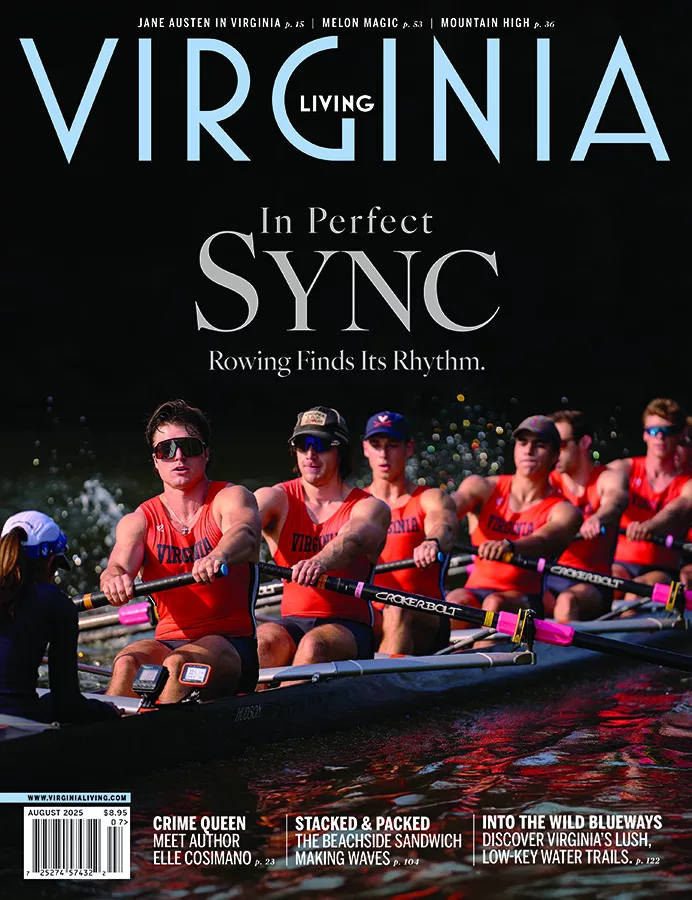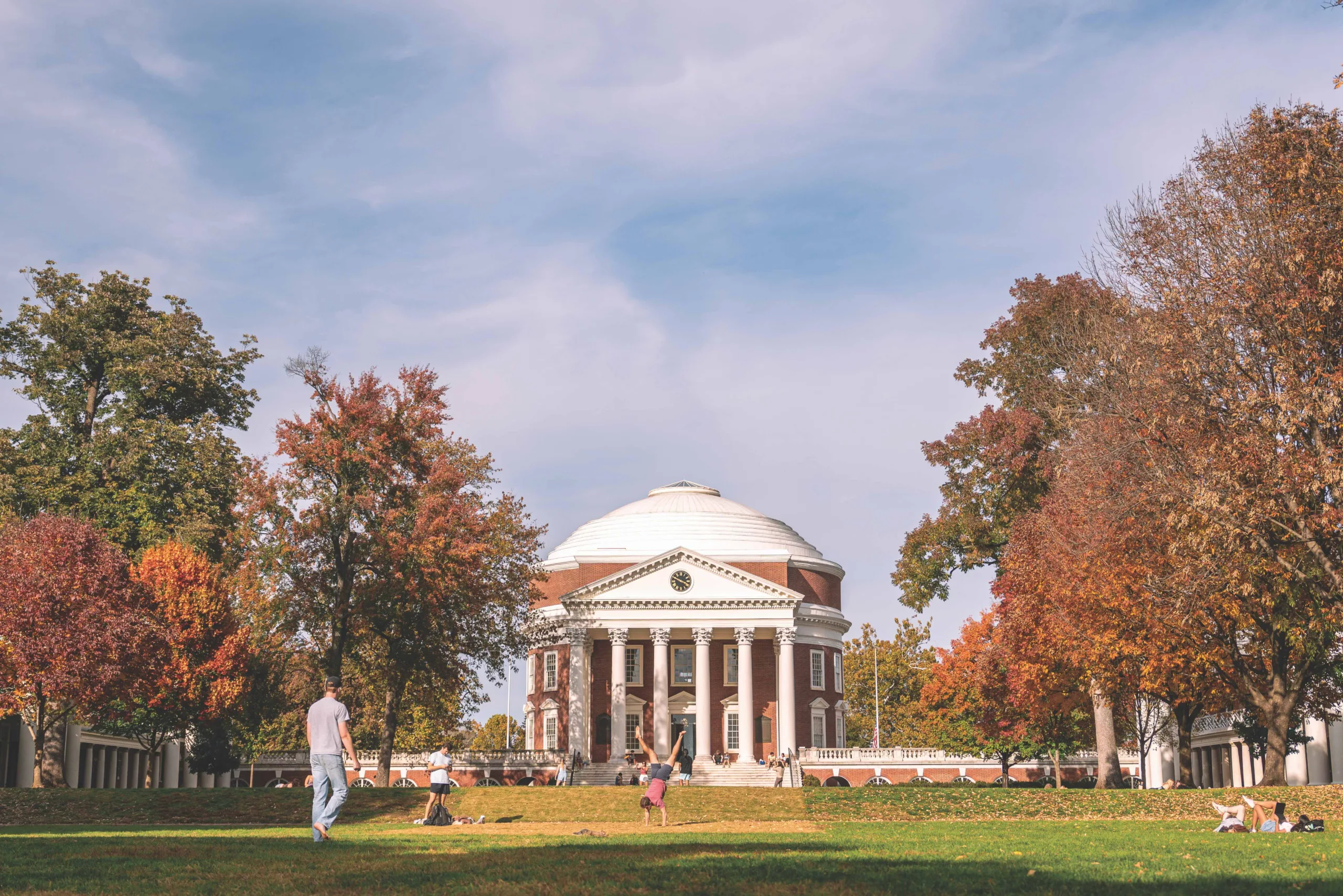The work of Rubin Peacock debuts in the VMFA sculpture garden.

Artist Ruben Peacock.

“Mattaponi Memories” is on display at Media General Corporate Headquarters in Richmond.
The Virginia Museum of Fine Arts sculpture garden will soon have a work by a Virginia artist—its first. A bronze by Rubin Peacock, “Untitled Totem,” the gift of Henrietta Near, the widow of renowned VMFA curator Pinckney Near, will be installed later this spring, capping off a long history of the Nears’ dedication to the museum. It will also be a homecoming of sorts for Peacock, who was the subject of a solo exhibition at the VMFA in 1980.
Near commissioned the 4-foot 8-inch bronze for her home more than a decade ago. The sculpture was based on a design created for Thomas Wilson Beale in 1978-79 by Peacock. Beale, who served as ambassador to Jamaica in the 1960s, had befriended Peacock when the young artist was in Jamaica with the Peace Corps. The original was a small piece (18 inches high). Since then, Peacock has reproduced the design in five different sizes. The title references ancient stele—slabs made from stone or wood used for commemorative purposes. Though abstract, the VMFA sculpture resembles a small totem pole with a bulbous and undulating profile (on one side) that suggests a similar silhouette. A verdigris patina is applied in such a way as to allow the bronze to show through, creating a variegated surface. Among other things, Peacock is known for the variety and beauty of his patinas, which require many hours of toil using combinations of acids and various polishing techniques to achieve the desired colors and effects. Subtle, enigmatic symbols are engraved on the sculpture’s surface. These are intentionally left open to interpretation. Ancient and modern, man made and natural, crude and sophisticated: “Untitled Totem” seems all of this at once.
Peacock will be in good company in VMFA’s Claiborne and Lora Robins Sculpture Garden, sharing space with artists like Dale Chihuly, Henry Moore, Aristide Maillol, and Oronzio Maldarelli.
Like a lot of Peacock’s sculptures, “Untitled Totem” is intended for a garden setting, so it is fitting that it will be installed outside. In the garden it will have high visibility because, according to Alex Nyerges, director of the VMFA, “We have so little space for exhibiting sculpture inside the museum. We are constantly moving things around and mostly in and out of storage. With Rubin’s work, when we put it in the garden it’s on view and it won’t go away.”
A courtly man and inveterate storyteller in both words and objects, the 74-year-old Peacock, a native of Winston-Salem, North Carolina, moved to Richmond in 1967 to attend graduate school at Virginia Commonwealth University. He’d just completed his stint with the Peace Corps following his graduation from the University of Georgia.
Peacock’s sculptures run the formal gamut. You get the sense he is constantly trying new things, reveling in the bronze medium he favors, playing with form and patina with assured virtuosity.
Peacock’s broad range of work in this difficult medium is extraordinary: “I’m drawn to bronze because it is bold, strong and responsive,” he explains. Some pieces are abstract, others representational and still others, a combination of the two. Many possess a Cubist quality with intersecting spatial planes and layered motifs. Some sculptures are hard edged and geometric, others have an earthy, organic quality, and others, a charming whimsical effect.
One series incorporates carved volcanic-fused sandstone and bronze. The stone was carved by the Zapotec Indians of Mexico, who Peacock first encountered during a trip he took by car from Florida to the Guatemalan border. He likes the interplay of the two materials and the effect of wrapping the bronze around the stone. “My use of bronze and stone is firmly rooted in both tradition and nature,” he says.
In the 1960s, Peacock bought a tumbledown 18th-century house in Aylett, which he painstakingly restored. It was here that he built a foundry to cast his work. A time consuming, labor-intensive pursuit, casting requires technical skill quite removed from the creative process. It’s unusual for an artist to both create sculpture and cast it. Most prefer to pass the casting off to specially trained artisans. “Doing the [casting] work myself creates a personal hallmark,” he explains. “Much contemporary art is impersonal and ephemeral, made from disposable materials. I create works for the ages. That’s a different sensibility.”
Sculptors generally make a plaster or clay model that the bronze is cast from. What Peacock likes best is working directly in a sheet of wax using hot instruments to shape the medium: “There are not too many people who work this way, but I realized quite early on how creative wax working could actually be. I’ve always had a natural feel for it. I just find between the wax working and the welding techniques, the sky’s the limit.
“My work reflects the 20th and 21st centuries in which I’ve lived, but the materials, processes and techniques I use are ancient. As early as I can remember I had a need to express myself in sculptural form. My sculptures are my personal interpretations of ancient spiritual ritual coming from an unknown, unstoppable source. They are my songs and I want to hear them sung.” RubinPeacock.com









